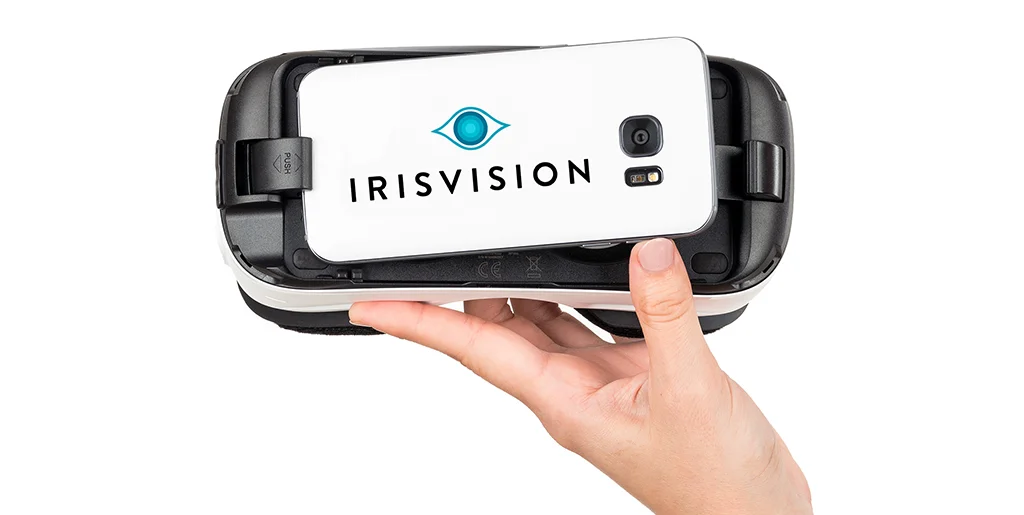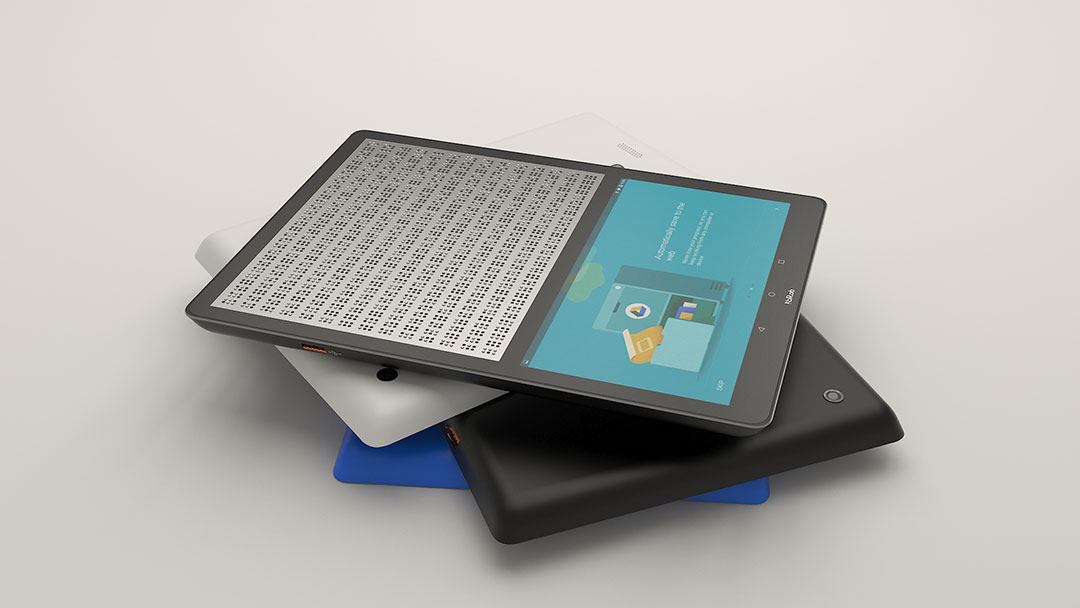Discover Cutting-edge Tools Created for the Visually Damaged
The development of ingenious devices for the visually damaged stands for a substantial advancement in accessibility and freedom. Technologies such as wise glasses with AI abilities and mobile applications designed to offer auditory descriptions are reshaping day-to-day experiences for individuals. Furthermore, wearable tools that utilize haptic responses enhance ecological understanding, while contemporary Braille technologies supply brand-new ways to involve with message. As these tools remain to evolve, their effect on the lives of those with aesthetic problems increases essential questions concerning the future of inclusivity and freedom in numerous aspects of life. What exists ahead in this technical landscape?
Smart Glasses for Navigating

Smart glasses designed for navigating are revolutionizing the way visually damaged people interact with their setting. These sophisticated gadgets make use of a mix of electronic camera innovation, expert system, and acoustic responses to provide real-time info concerning environments. By using barrier detection systems, wise glasses can signal customers to possible dangers, making it possible for more secure mobility in both familiar and unknown setups.
The combination of GPS modern technology even more enhances navigating abilities, allowing users to obtain auditory directions as they relocate. This hands-free approach not just fosters freedom yet likewise encourages visually impaired people to navigate metropolitan landscapes with enhanced self-confidence. In addition, lots of smart glasses are equipped with attributes that recognize spots and road signs, giving contextual information that improves the individual experience.
Moreover, the development of these gadgets is continually advancing, with business functioning to boost the accuracy of item recognition and expand the series of navigational features. As wise glasses come to be extra obtainable and cost effective, they hold the potential to considerably change every day life for aesthetically impaired customers. Eventually, these innovative tools represent a crucial action towards inclusivity, offering enhanced flexibility and a higher sense of freedom for individuals navigating the globe around them.

Mobile Apps for Daily Living
Just how can mobile applications improve the lives of visually damaged people? Mobile applications are reinventing the method aesthetically damaged individuals browse their environments, handle everyday jobs, and accessibility details. These applications give necessary assistance with various functionalities, cultivating self-reliance and enhancing lifestyle.
Numerous cutting-edge mobile apps are made especially for daily living. Apps like Be My Eyes attach aesthetically impaired individuals with sighted volunteers through video telephone calls, enabling them to receive real-time support with jobs such as checking out tags or navigating strange areas. In A Similar Way, Seeing AI, created by Microsoft, uses expert system to define surroundings, checked out message, and identify things, properly changing a smart device into a powerful tool for daily help.
Furthermore, navigation apps tailored for the visually damaged, such as Aira and BlindSquare, provide audio-based instructions and environmental details, making it possible for customers to traverse their surroundings securely and confidently. Beyond navigating and prompt help, mobile applications also support organization and task administration, with attributes that help customers set suggestions, develop order of business, and track consultations. In summary, mobile applications offer as vital resources, empowering visually impaired individuals to lead more independent and meeting lives.
Wearable Technologies for Aid
Empowerment through innovation is significantly obvious in the world of wearable gadgets designed to help aesthetically impaired individuals. These ingenious devices incorporate seamlessly into life, boosting navigation and providing important feedback to individuals. For example, smart glasses equipped with electronic cameras can acknowledge faces and read message aloud, permitting customers to engage more confidently in social and professional setups.
Another noteworthy innovation is using haptic responses systems in wearable tools. These systems utilize vibrations or various other responsive signals to convey info concerning the individual's setting, such as barriers or changes in terrain, boosting wheelchair and security. Wearable innovations also consist of wristbands that link to mobile phones, signaling users to alerts with subtle resonances, therefore enhancing connection without reliance on aesthetic hints.
As these innovations continue to develop, they are not only improving independence for aesthetically damaged people yet also promoting a higher feeling of incorporation in society. By connecting the gap between difficulties encountered in daily living and the possibility for autonomy, wearable modern technologies work as critical devices in the quest for equal rights and empowerment for those with aesthetic disabilities.
Audio Summary Devices
Audio summary tools play a crucial duty in boosting access for aesthetically damaged people, offering them with the capacity to involve with aesthetic media. Screen readers for the blind. These devices offer narrated descriptions of crucial aesthetic components in films, tv shows, and live efficiencies, ensuring that users can completely understand the context and emotions conveyed via visuals
Audio description can be incorporated into various platforms, including streaming solutions, movie theater screenings, and live movie theater. Many popular streaming solutions now include audio summary as an ease of access attribute, allowing customers to select it quickly. Along with conventional media, specialized apps additionally exist, giving audio descriptions for art exhibitions, galleries, and other social occasions.
The effectiveness of audio description depends upon the skill of the storytellers, who have to convey aesthetic information succinctly without diminishing the original sound. Advancements in this field are likewise leading the way for even more tailored experiences, where individuals can change the level of detail and pacing according to their choices.
Braille Innovations and Tools
Braille gadgets and technologies have actually significantly changed the means visually damaged people connect with message and info. Modern advancements have caused the development of functional tools that boost proficiency and independence amongst individuals. Especially, Braille present modern technologies have advanced, permitting vibrant analysis experiences. These gadgets transform electronic message right into Braille, making it possible for customers to access a vast range of info on tablets, computers, and smartphones.
Furthermore, mobile Braille notetakers incorporate traditional Braille input with modern-day functionalities, promoting note-taking, scheduling, and paper editing on the go. Voice-activated assistive devices. These compact gadgets usually feature text-to-speech abilities, linking the space between Braille and acoustic info
Furthermore, cutting-edge Braille printers have actually arised, enabling users to produce Braille tags, files, and academic materials efficiently. This ease of access promotes higher involvement in academic and professional settings, ultimately promoting inclusivity.
Moreover, research into wise Braille modern technologies continues to increase. Devices that incorporate artificial intelligence are being discovered to provide real-time navigating support and contextual information, boosting the user experience in diverse settings. Generally, these advancements show a commitment to empowering aesthetically impaired people via modern technology, guaranteeing they can easily gain access to and involve with the world around them.

Final Thought
The development of ingenious devices for the visually damaged dramatically improves freedom and quality of life. Smart glasses, mobile applications, wearable modern technologies, audio description devices, and Braille technologies collectively equip people by supplying vital navigation assistance, ecological understanding, and enhanced reading experiences. These innovations not only foster higher addition but additionally promote freedom in everyday activities, inevitably adding to an extra equitable and available culture for visually Mobility aids for visually impaired users damaged people. Continued advancement in this field holds guarantee for further improvements.
As wise glasses become much more obtainable and cost effective, they hold the potential to dramatically change day-to-day life for aesthetically damaged individuals. Mobile applications are transforming the method visually impaired individuals navigate their environments, handle daily jobs, and gain access to information. Apps like Be My Eyes connect aesthetically damaged users with sighted volunteers through video clip calls, allowing them to receive real-time aid with tasks such as reading labels or navigating unknown spaces.Furthermore, navigation applications tailored for the visually damaged, such as Aira and BlindSquare, supply audio-based directions and ecological information, allowing users to traverse their surroundings securely and confidently.The development of cutting-edge tools for the visually damaged substantially boosts independence and quality of life.